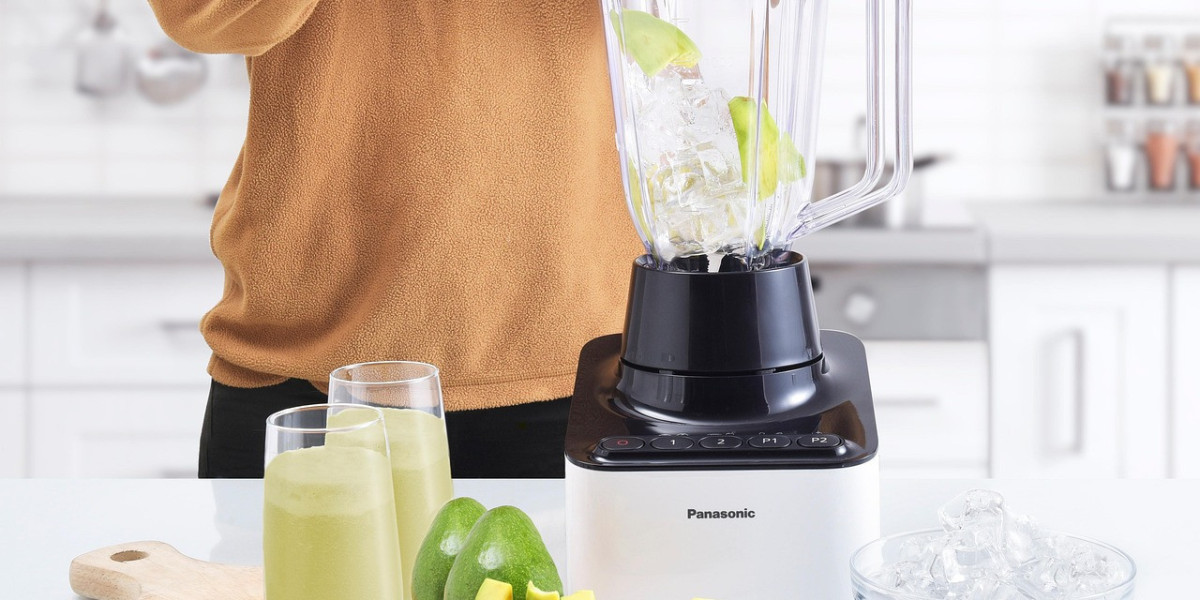The modern kitchen has evolved into a technological marvel, equipped with sophisticated appliances that would have seemed like science fiction just decades ago. From smart refrigerators that can order groceries to induction cooktops that heat with precision, today's kitchen appliances offer unprecedented convenience and efficiency. Much like how a solar panel harnesses energy from the sun to power our homes sustainably, these appliances transform electricity into the cooking power that fuels our daily lives. However, with this technological advancement comes the critical responsibility of understanding and maintaining proper safety protocols to protect our families and homes.
The Foundation of Kitchen Safety: Understanding Your Appliances
Every appliance in your kitchen operates on fundamental principles of electrical engineering and thermodynamics, creating potential hazards that require respect and understanding. The key to kitchen safety lies not in avoiding these powerful tools, but in developing a comprehensive knowledge of how they function and what can go wrong.
When you purchase appliances from reputable manufacturers, you are investing in years of safety research and development. Companies have spent countless hours engineering safety features into their products, from automatic shut-off mechanisms to heat-resistant materials. However, these built-in protections only work effectively when homeowners understand their limitations and maintain their appliances properly.
The electrical systems in modern kitchens carry substantial current loads, often requiring dedicated circuits for major appliances. Understanding your home's electrical capacity and the power requirements of your appliances prevents dangerous overloading situations that can lead to fires or electrocution. This knowledge becomes particularly important when upgrading older kitchens with modern, high-powered appliances that may exceed the capacity of existing electrical systems.
Heat-Related Hazards and Prevention Strategies
Heat represents the most obvious danger in kitchen environments, but its manifestations extend far beyond the visible flames of a gas stove. Radiant heat from electric coils, superheated steam from pressure cookers, and scalding surfaces on recently used appliances create multiple opportunities for serious burns.
The thermal mass of kitchen appliances means they retain dangerous levels of heat long after being turned off. Cast iron cookware, ceramic cooktops, and oven interiors can remain at burn-inducing temperatures for extended periods. Developing habits around heat awareness, such as always assuming surfaces are hot and using appropriate protective equipment, prevents the majority of thermal injuries in home kitchens.
Grease fires present a particularly dangerous heat-related hazard because they cannot be extinguished with water. When cooking oils reach their smoke point and ignite, the resulting fire burns extremely hot and can spread rapidly. Understanding the proper response to grease fires, including the use of baking soda for small fires or covering the pan with a lid to starve the fire of oxygen, can prevent kitchen disasters from escalating into house fires.
Electrical Safety in the Modern Kitchen
The intersection of electricity and water in kitchen environments creates unique safety challenges that require constant vigilance. Ground Fault Circuit Interrupter (GFCI) outlets have become mandatory in kitchen installations precisely because of this dangerous combination. These devices detect electrical imbalances that could indicate current flowing through water or a human body, instantly cutting power to prevent electrocution.
Appliance maintenance plays a crucial role in electrical safety. Frayed cords, loose connections, and worn insulation can transform everyday kitchen tools into serious hazards. Regular inspection of electrical cords, particularly in areas where they may contact heat sources or experience frequent flexing, helps identify problems before they become dangerous.
The power demands of modern kitchen appliances often push household electrical systems to their limits. Running multiple high-wattage appliances simultaneously can overload circuits, causing breakers to trip or, in older homes with inadequate electrical systems, creating fire hazards. Understanding your kitchen's electrical capacity and managing appliance usage accordingly prevents these dangerous situations.
Gas Appliance Safety Considerations
Gas-powered kitchen appliances offer precise temperature control and instant heat adjustment, but they also introduce the risks associated with combustible fuel. Proper installation and maintenance of gas appliances require professional expertise, as incorrect connections can lead to gas leaks that pose explosion and asphyxiation risks.
The blue flame of properly burning natural gas indicates complete combustion, while yellow or orange flames suggest incomplete burning that produces dangerous carbon monoxide. Regular inspection of gas appliance flames and ensuring adequate ventilation prevents carbon monoxide buildup, which can be fatal in enclosed spaces.
Gas shut-off valves represent critical safety equipment that every homeowner should locate and understand how to operate. In emergency situations, the ability to quickly shut off gas supply to individual appliances or the entire kitchen can prevent minor incidents from becoming major disasters.
Smart Appliance Safety in the Connected Kitchen
The integration of smart technology into kitchen appliances has introduced new safety considerations alongside enhanced convenience. Internet-connected appliances offer remote monitoring and control capabilities, but they also create potential cybersecurity vulnerabilities that could be exploited by malicious actors.
Manufacturers like Panasonic have developed sophisticated smart kitchen systems that include multiple layers of safety protocols, from automatic shut-off features to remote monitoring capabilities that alert homeowners to potential problems. Similarly, Samsung has incorporated advanced sensors and artificial intelligence into their smart appliances to detect unusual operating conditions and prevent accidents before they occur.
The reliability of smart appliance safety features depends heavily on maintaining current firmware and software updates. Just as computers require regular updates to address security vulnerabilities, smart appliances need periodic updates to ensure their safety systems function properly. Establishing routines for checking and installing appliance updates helps maintain optimal safety performance.
Ventilation and Air Quality Management
Proper ventilation in kitchen environments extends beyond comfort to encompass serious health and safety concerns. Cooking processes generate heat, moisture, and various airborne contaminants that must be effectively removed to maintain safe indoor air quality. Range hoods and exhaust fans serve as the primary defence against these pollutants, but their effectiveness depends on proper sizing, installation, and maintenance.
The accumulation of grease in ventilation systems creates significant fire hazards, as this buildup can ignite and spread flames throughout ductwork and into wall cavities. Regular cleaning of range hood filters and periodic professional cleaning of exhaust ducts prevents these dangerous accumulations.
Carbon monoxide detection becomes particularly important in kitchens with gas appliances, as this colourless, odourless gas can accumulate to lethal levels without proper ventilation. Installing carbon monoxide detectors in kitchen areas and ensuring they receive regular battery maintenance provides essential protection against this invisible threat.
Child Safety and Kitchen Design
Designing kitchen safety protocols around the presence of children requires consideration of their natural curiosity and limited understanding of danger. Child-safety locks on cabinets containing hazardous materials, appliance locks that prevent unauthorised operation, and physical barriers that restrict access to dangerous areas form the foundation of child-safe kitchen design.
The height and accessibility of various kitchen elements must be evaluated from a child's perspective. Hot surfaces, sharp edges, and electrical outlets all present hazards that may not be obvious to adult users but pose significant risks to children. Creating designated safe zones where children can participate in kitchen activities while remaining protected from hazards encourages positive engagement while maintaining safety.
Emergency Preparedness and Response
Despite the best preventive measures, kitchen emergencies can still occur, making preparedness and proper response protocols essential components of kitchen safety. Fire extinguishers rated for kitchen use should be easily accessible and all household members should understand their proper operation. Sony has developed innovative smoke detection systems that can differentiate between cooking vapours and actual fire, reducing false alarms while maintaining protection.
First aid supplies specifically chosen for kitchen injuries, including burn gel and sterile bandages, should be readily available but stored away from heat sources and out of reach of children. Knowing how to respond to common kitchen injuries, from minor cuts to serious burns, can significantly impact recovery outcomes.
Emergency contact information, including poison control numbers and local emergency services, should be posted in easily visible locations. In stress situations, having this information immediately available prevents delays in getting appropriate help.
Conclusion: Building a Culture of Kitchen Safety
Kitchen appliance safety represents an ongoing commitment rather than a one-time consideration. As technology continues to evolve and new appliances enter our homes, staying informed about proper safety practices becomes increasingly important. The investment in quality appliances from reputable manufacturers, combined with proper installation, regular maintenance, and informed operation, creates the foundation for safe kitchen environments.
The modern kitchen's potential for both convenience and danger demands respect and attention from every homeowner. By understanding the principles behind appliance operation, maintaining equipment properly, and developing good safety habits, we can enjoy the benefits of modern kitchen technology while protecting our families and homes from preventable accidents. Remember that kitchen safety is not about restricting the use of these powerful tools, but about using them wisely and with full awareness of their capabilities and limitations.



